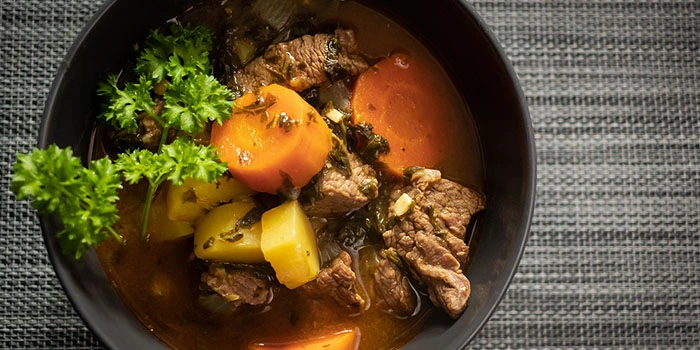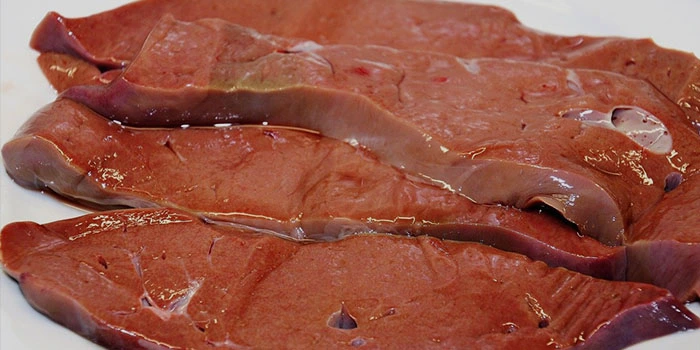Introduction
Wanted to enjoy a silky, smooth cheese soup? But you ended up making a soup that’s curdling? It’s really upsetting.
But this can be fixed if you melt the cheese properly. And you can still have that creamy cheese soup.
You can try simmering the soup in low heat and whisk the soup. You can also add a splash of water to allow moisture into the cheese. Moreover, adding cream can also make the cheese melt in the soup. Adding alcohol or drops of lemon juice will do the work too. Or simply mix the soup with a hand mixer or add your base sauce or an emulsifier.
Find out how you can melt cheese in your soup and what things you should consider from the details provided in our article.
How To Understand If The Cheese Isn’t Melting?
Sometimes the cheese takes more time to melt than usual. This may be a reason for panic if you’re a beginner.
However, if you want to make sure whether your cheese is melting or not, look for clumps. You see, when cheese doesn’t melt in soup or other liquids, it usually tends to form clumps within the soup. In some cases, you’ll find the top of the soup covered with a layer of oil.
Now you may find oil separated in your soup because of the uneven fat breakdown of cheese in the soup. If that’s the case, you know it’s your cue to fix it.

Melting The Cheese – Quick & Easy Solutions
To fix the clumpy soup you can follow a few quick and easy solutions. Here’s what to do if you end up with a soup that’s clumpy.
Solution 1 of 8: Simmer In Low Heat
The first thing you need to do is lower the heat. If your soup is still in the making, just try to simmer it in low heat. Cook it in about 120 to 130 degrees Fahrenheit.
Often the cheese gets burnt right away instead of melting. This is because the cheese is put in a high heat which it can’t endure. As a result, it burns.
Now that your cheese is already not melting, try to simmer it in low heat for quite some time. This will bring back moisture into the cheese and allow it to melt properly.
Here’s the thing-
If there’s a bubble of oil floating in the soup, add in a handful of shredded cheese so incorporate the cheese within the oil. This will help the cheese to melt and the fat layers will disappear.
Solution 2 of 8: Whisk Continuously
Now this a totally separate method but it tags along with the previous one. While you simmer or cook your soup and find it not melting, whisk the mixture very well. Something you’d avoid when thickening a ranch dressing.
You can use a whisk or a spoon to continuously stir the mixture. This helps to break down the lumps.
If you’re making a cheese soup, chances are you’ve used a roux for the soup. This roux may have been too thick or had lumps in it, causing the cheese to not melt.
So whisk the soup well enough to break down the lumps and form an even and smooth creamy texture in the soup.
Solution 3 of 8: Add Water
Now don’t be too surprised when you see the heading. We’re not asking you to just add in gallons of water. What you’re going to do here is a little more tricky.
Add in a splash of water which is about 2 tablespoons in the pot full of soup and cover the pot with a lid. This will bring in a lot of moisture into the surface of the pot and result in the soup melting. This is because moisture generally helps the cheese to break down.
Now, this method won’t work if you’ve used sharp cheddar cheese. If you know your cheese type, it’ll help you fix the issue better.
Solution 4 of 8: Add Cream Or Cold Milk
If you think adding water will alter the flavor of your soup, go ahead and add in some cream or cold milk. So, how should you add the cream?
First of all, make sure the cream or milk isn’t low fat. Use a high-fat cream to add to the soup. This will make the soup creamy when the cheese melts.
The cream helps to melt the cheese as the cheese incorporates within the cream. However, this makes the soup quite creamy and thick.
Now for people who don’t like cream or don’t want their soup to be thick, they can add a few tablespoons of cold milk. Also, make sure to use skimmed milk for a creamy and smooth texture.

Solution 5 of 8: Add Alcohol
I’m pretty sure you didn’t know you could add alcohol to your soup. Maybe it’s time to spice up the mundane flavors in your soup by adding alcohol.
Alcohol helps break down cheese. So if the cheese in your soup isn’t melting, add a splash of alcohol and let it melt. Make sure to add the alcohol while the soup is still being cooked.
But make sure you don’t pour in too much alcohol. This will completely alter the flavor and might even ruin the soup. Just add in a splash of it and cover the pot. Let the cheese incorporate in the alcohol and melt.

Here’s the thing-
Don’t pour random alcohol into your soup. Because this will create a different reaction within the soup and ruin it. Use alcohol such as white wine or beer that has tartaric acid in it.
Because the tartaric acid is what causes the cheese to break down and melt. If you do not want to use alcohol, you can add in a few drops of lemon juice to do the same.
| Alcohol | Amount of Soup | Amount of Alcohol | Flavor & Texture |
| White wine | 1 cup (per serving) | About 1 and ½ teaspoon | Enhances the flavor of the cheese. Moreover, avoids stringiness |
| Beer | 1 cup (per serving) | About 1 teaspoon | Gives a strong flavor to the cheese but makes it creamy |
| Vodka | 1 cup (per serving) | ½ teaspoon | Too strong of a flavor. Might make the soup quite a delicacy if used the right way. |
Solution 6 of 8: Hand Mix The Soup
If you don’t prefer any of the above-mentioned methods, you can mix it or blend it into the soup using a hand mixer. Using a hand mixer will blend in the whole soup and make it creamy and silky.
Make sure to mix the soup while it’s being simmered in the pot. This will help you keep the consistency of the soup. This will also blend the onion granules or onion powder in your soup.
If you want it thicker and more creamy, you can add some cream or milk to the soup. Adding in the cream will also get rid of the floating oil bubbles as you blend it.
Anyways, here are our top choices of hand mixer-
- Mueller Electric Hand Mixer
- Hamilton Beach Power Deluxe 6-Speed Electric Hand Mixer
- BLACK+DECKER Lightweight Hand Mixer
Solution 7 of 8: Add Base Sauce
Adding the base sauce you started with, can also help melt the cheese completely. Most people add in the vegetable or chicken stock within the base or roux. If you’ve done the same, you’ll need to make a little portion of the base sauce again.
This time you can also add shredded cheese into the sauce and immediately pour it into the soup. This will help the cheese bind in with the roux and melt real quick.
Sometimes, the cheese doesn’t melt off the consistency or thinness of the soup. That is when you need to equalize the texture.
You either thin out the cheese or thicken the liquid that you’re melting the cheese into. In this case, we’re thickening the soup to keep the cheese from melting into it.
Your end result will be a creamy, and silky soup that melts in your mouth right away.

Solution 8 of 8: Add Emulsifier
In case you don’t want to go through any of the above-mentioned troubles, your last resort is to settle for an emulsifier. An emulsifier is an external additive that’ll help the cheese melt into the soup. You can use soy or egg lecithin to emulsify your cheese.
Prevention- Checkpoints To Make Sure The Melting
Now that you’ve made your cheese melt, figure out what went wrong in the first place. If you’re aware of your mistakes, you’ll never repeat them.
Since melting cheese is a science on its own. By following some instructions or keeping some in mind, you can always avoid this mishap from occurring.
Don’t use sharp cheese
No matter what cheese you use, avoid using a sharp one. If you’re using cheddar cheese in your soup, don’t use a sharp one.
Sharp cheese refers to the age of the cheddar. As the cheddar ages, it changes the flavor and the texture. This in turn causes the cheddar to not melt easily.
Sharp cheddar is aged about 6 to 8 months. It is better to use cheddar cheese that is 3 months old and not longer than that if you intend to use it in your soup.
Use Shredded cheese
Now, this is important. While adding the cheese to your soup, make sure that it is shredded completely. Adding chunks of cheese stops the melting process and takes a longer time. This is all the reason behind the buildup of the bubble of oil on top.
Make sure to add one handful of shredded cheese at a time. Adding too much will cease the melting and make clumps of cheese. Once the cheese melts, add in another handful again and work your way through it.
This way, your cheese will melt completely in the soup and the outcome will be a creamy and smooth soup.

Use Low-fat cheese
If you’re using cheese in your soup, make sure to use a low-fat one. People often use high-fat cheese to make their soup creamier. But that’s where they go wrong.
High fat cheese doesn’t melt properly within the soup. Moreover, the fat in the cheese breaks down and separates. This results in the formation of bubbles of oil in the soup. The fat leaks out of the cheese.
Hence, using low-fat cheese makes the melting process easier and quicker.
Cook at low heat
Cooking any kind of food is highly related to the temperature it is being cooked at. While making soup, it is always recommended to cook it on low heat and let it simmer.
So never boil your soup once you’ve added cheese to it. High heat breaks down the protein and water in the dairy products to separate and form curdles.
It is wiser to simmer the soup in low heat to 130 degrees Fahrenheit, covering the pot. This helps the soup and cheese to bind together. Moreover, never cook your soup at a temperature above 150 degrees Fahrenheit.
Use the Right Cheese
The type of cheese that you’re using for your soup is an important factor for melting. All kinds of cheese don’t melt the same way. Some kinds of cheese are not even used for melting. So knowing the science of melting cheese is quite important.
It is better to use cheese with a high moisture content because moisture helps the cheese to melt easier. Moreover, the ideal ph of cheese for melting is between 5.1 to 5.9. The sweet spot is 5.3.
Here are a few kinds of cheese good for use in the soup.
| Cheese Type | Cheese pH | Moisture content | Aging Time | Fat Content/
100 g |
Flavor & Taste |
| Cheddar | 5.4-5.1 | High moisture | 2-3 months | 33 g | Sharp, pungent flavor. Slightly earthy |
| Parmigiano Reggiano | 5.4-5.1 | Medium moisture | 12 months | 29 g | Sharp & complex, fruity or nutty flavor |
| Monterey Jack | 5.4-5.1 | High moisture | 2 weeks-1 month | 30 g | Mild flavor. Slightly sweet |
| Gruyere | 5.7-5.5 | High moisture | 5-12 months | 32 g | Sweet but slightly salty |
| Fontina | 6.5 | High moisture | 3 months | 31 g | Mild-medium sharp flavor |
So now you should be able to pick the right cheese for your soup. Hopefully, it’ll melt completely into the soup.
FAQs
Cheese with low moisture content and aged cheese are bad for melting such as halloumi, Kesari, queso Blanco, and paneer.
A Monterey jack cheese is the best one to use for nachos. It has the oozy- melty quality that goes best with nachos. You can also use a sharp cheddar that’ll add a tangy flavor to it.
if the cheddar cheese gets too old and aged, the protein breaks down making it stretchy and loose moisture. That’s why it isn’t melting
Conclusion
Having a cheese soup that isn’t creamy and smooth is the last thing we’d want. So it’s necessary to understand how to melt the cheese properly.
Even though a mozzarella cheese hits the sweet spot of ph level and melts the perfect way, you can’t use it in your cheese soup.
So the next time you see your cheese not melting in soup, you know the drill. Let us know if it helps you.





